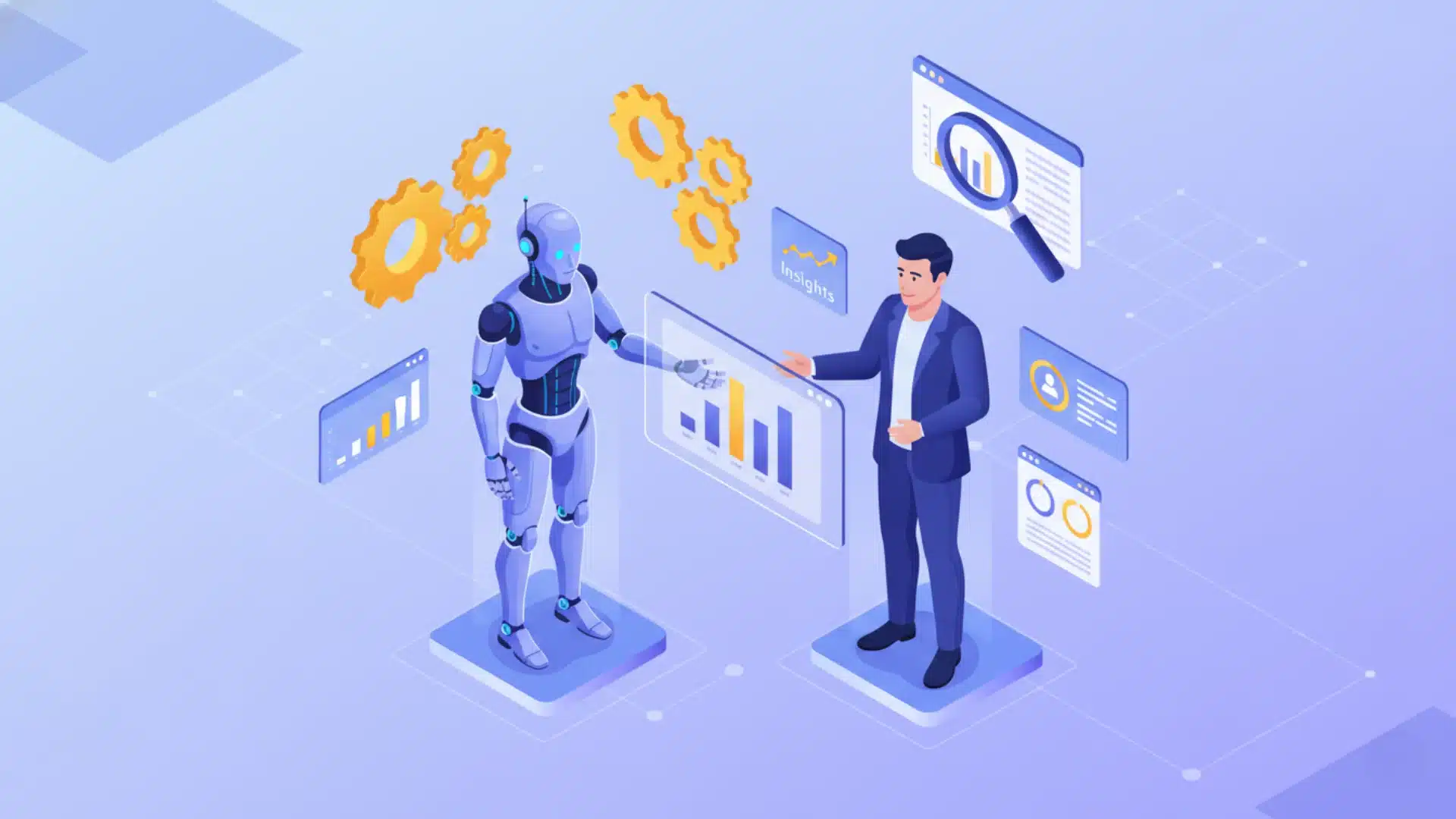The Critical Importance of SAP Security in 2025
As organizations increasingly rely on SAP systems to manage critical business processes, the security of these environments has become paramount.
According to a 2024 report by Gartner, SAP systems process financial transactions worth over $87 trillion annually across more than 230,000 customers worldwide, making them prime targets for sophisticated cyber threats.
Furthermore, SAP security monitoring practices must evolve as attack vectors become more advanced and regulatory requirements grow increasingly complex.
The stakes have never been higher – IBM’s Cost of a Data Breach Report 2024 revealed that the average cost of an ERP security breach now exceeds $5.2 million, representing a 23% increase from previous years.
Organizations must prioritize comprehensive SAP security monitoring strategies to safeguard their most critical business assets.
Understanding SAP Security Monitoring
SAP security monitoring encompasses the continuous observation, analysis, and protection of SAP environments against unauthorized access, data breaches, and compliance violations.
This proactive approach involves tracking user activities, system configurations, and transaction executions to identify potential security risks.
Additionally, effective SAP security monitoring requires implementing robust controls, regular audits, and real-time alerting mechanisms to maintain the integrity of business-critical applications.
Core Components of SAP Security
The foundation of robust SAP security monitoring rests on several critical components working in harmony. These include identity and access management, authentication controls, authorization management, data protection measures, and network security protocols.
Furthermore, comprehensive audit logging, threat detection capabilities, and vulnerability management processes are essential elements of a mature security framework.
According to SAP’s 2024 Security Guide, organizations implementing all core security components experience 76% fewer security incidents than those with partial implementations.
Key Differences Between SAP Security and Traditional IT Security
While traditional IT security focuses broadly on network infrastructure and general system protection, SAP security monitoring addresses specific challenges unique to SAP environments.
For instance, SAP systems feature proprietary architectures, specialized business logic, and complex authorization concepts that require specialized expertise.
Moreover, SAP applications often process highly sensitive business data, necessitating granular control mechanisms beyond standard IT security approaches.
Common SAP Security Monitoring Challenges in 2025
As SAP systems continue to be the backbone of global enterprises, safeguarding them against evolving cyber threats remains a critical priority. These factors necessitate a proactive and adaptive approach to ensure the integrity, confidentiality, and availability of sensitive business data.
Challenge 1: Complex Multi-Component SAP Environments
Today’s SAP landscapes present significant SAP security monitoring challenges due to their architectural complexity. Non-secure communication protocols between components often create vulnerabilities that attackers can exploit.
Additionally, siloed system architectures make unified security monitoring difficult, while hybrid deployments spanning cloud and on-premises infrastructure expand the attack surface considerably.
Challenge 2: Insufficient Access Control Management
Effective SAP security monitoring is frequently hampered by inadequate access control mechanisms. Role-based access issues arise when permissions are improperly assigned, creating security gaps.
Moreover, excessive authorizations often lead to privilege escalation risks, while emergency access management remains problematic for many organizations trying to balance security with operational needs.
Challenge 3: Inadequate Patch Management
A significant obstacle to effective SAP security monitoring is the challenge of keeping systems updated. Delayed security updates leave systems vulnerable to known exploits, while patch testing complexities often slow deployment timelines.
Consequently, security teams must balance robust security measures with system availability requirements, often making difficult tradeoffs in their SAP security approaches.
Challenge 4: Custom Code Vulnerabilities
The safety of custom development represents a major concern for SAP security monitoring professionals. Insecure custom ABAP/4 code frequently introduces vulnerabilities that standard security tools might miss.
Additionally, many organizations lack systematic code scanning in their development processes, allowing flaws to reach production. Moreover, API security weaknesses and transport management risks create additional vectors for potential attacks that circumvent traditional security controls.
Challenge 5: Limited Integration with Security Operations Centers (SOCs)
SAP security monitoring is often hindered by poor integration with broader security operations. Siloed SAP management practices create visibility gaps for security teams, while proprietary log formats complicate analysis in standard security tools.
Furthermore, the shortage of SAP expertise among security professionals means that threats may go undetected. Consequently, disconnected security tools and processes prevent comprehensive protection of critical business systems.
Challenge 6: Evolving Compliance Requirements
The regulatory landscape presents ongoing challenges for SAP security monitoring programs. Industry-specific regulations impose specialized security requirements that vary across sectors and regions.
Additionally, GDPR and emerging data privacy laws mandate stricter controls over personal data processing. Moreover, financial compliance frameworks like SOX require robust segregation of duties and audit trails.
Comprehensive Solutions for SAP Security Monitoring
Effective SAP monitoring is paramount for organizations to protect their critical business processes and sensitive data. With the increasing sophistication of cyber threats and the complexity of modern SAP environments, a comprehensive approach is no longer optional but a necessity.
Solution 1: Implementing Robust Roles and Authorizations Management
Effective SAP security monitoring begins with comprehensive roles and authorization management. Implementing automated SoD conflict detection tools can identify permission combinations that create compliance risks.
Additionally, applying least privilege principles ensures users have only the access they need for their specific job functions. Furthermore, establishing continuous authorization reviews helps maintain appropriate access levels as organizational roles evolve.
Solution 2: Effective SAP Patch Management Strategies
Strategic patch management forms a critical component of SAP security monitoring programs. Prioritizing critical security patches based on risk assessment ensures the most dangerous vulnerabilities are addressed first.
Moreover, automated patch deployment tools can streamline the update process, while virtual patching provides temporary protection when immediate updates aren’t feasible.
Solution 3: Secure Coding and Transport Management
Proactive SAP security monitoring must address risks in the development pipeline. Implementing code vulnerability scanning tools helps identify security flaws before they reach production systems. Additionally, comprehensive developer security training builds awareness of secure coding practices.
Furthermore, establishing secure transport processes prevents unauthorized changes to production environments, while systematic code review practices catch vulnerabilities early in the development lifecycle.
Solution 4: Transaction and System Monitoring
Continuous observation forms the backbone of effective SAP security monitoring practices. Implementing real-time transaction monitoring helps detect suspicious activities as they occur, enabling a prompt response.
Additionally, deploying suspicious activity detection algorithms can identify patterns indicative of attacks or fraud. Moreover, system configuration monitoring ensures security settings remain consistent, while RFC/API gateway monitoring protects critical integration points.
Solution 5: Integrating SAP Security with Enterprise Security Programs
Holistic SAP security monitoring requires integration with broader security initiatives. Implementing SIEM integration strategies enables correlation of SAP events with other security data.
Establishing centralized security monitoring provides comprehensive visibility across the technology landscape.
Furthermore, cross-functional security teams combining SAP and security expertise can more effectively address complex threats through unified detection and response capabilities.
Solution 6: Leveraging Advanced Security Tools
Modern SAP security monitoring increasingly relies on sophisticated technological solutions. SAP Enterprise Threat Detection provides specialized monitoring capabilities designed specifically for SAP environments.
Moreover, AI-powered threat analytics can identify subtle attack patterns human analysts might miss, while user behavior monitoring establishes baselines for detecting anomalous activities.
Key SAP Security Monitoring Tools and Solutions for 2025
Organizations are seeking advanced tools and solutions that offer deeper visibility, automated threat detection, and seamless integration across hybrid SAP environments.
This introduction highlights the key technologies and strategies that will define effective SAP monitoring in the coming year
SAP’s Native Security Solutions
SAP offers several built-in capabilities that form the foundation of effective SAP security monitoring programs. SAP Enterprise Threat Detection (ETD) provides real-time threat monitoring and analysis designed specifically for SAP landscapes.
Additionally, SAP Access Control helps manage authorizations and prevent separation of duties conflicts. Furthermore, SAP Process Control enables monitoring of critical business processes, while SAP Privacy Governance facilitates compliance with data protection regulations across complex SAP environments.
Third-Party SAP Security Platforms
The SAP security monitoring ecosystem includes numerous specialized third-party solutions. Platforms from vendors like Onapsis and SecurityBridge provide comprehensive security monitoring specifically designed for SAP environments.
According to a 2024 Forrester report, organizations using specialized third-party SAP security tools experience 42% fewer successful attacks compared to those relying solely on native capabilities.
Managed Security Service Providers for SAP
Many organizations are turning to specialized services to strengthen their SAP security monitoring capabilities. Managed Security Service Providers (MSSPs) with SAP expertise offer continuous monitoring and threat detection services.
Moreover, a recent study by IDC, 63% of Fortune 500 companies now use some form of managed security services for their SAP environments, representing a 27% increase from 2023.
Emerging Technologies in SAP Security
The future of SAP security monitoring is being shaped by innovative technologies. Artificial intelligence and machine learning are revolutionizing threat detection by identifying subtle patterns indicative of attacks.
Additionally, blockchain-based solutions are emerging for secure transaction verification and immutable audit trails. Furthermore, automated remediation tools are reducing response times to security incidents.
Implementing an Effective SAP Security Monitoring Framework
Implementing an effective SAP monitoring framework is crucial for organizations to maintain the integrity, confidentiality, and availability of their mission-critical data.
This introduction explores the key steps and considerations for building a robust SAP security framework that aligns with evolving cyber threats and regulatory demands.
Step 1: Security Assessment and Gap Analysis
Building an effective SAP security monitoring framework begins with a comprehensive assessment. This process involves evaluating current security controls against industry standards and identifying critical vulnerabilities.
Additionally, risk assessment methodologies help prioritize remediation efforts based on potential business impact. Furthermore, gap analysis against frameworks like NIST or ISO 27001 provides a structured approach to identifying security deficiencies requiring immediate attention.
Step 2: Developing a Comprehensive Security Policy
Successful SAP security monitoring requires clear governance documents guiding security practices. Developing comprehensive security policies establishes standards for system access, configuration management, and security monitoring.
Moreover, regular policy reviews ensure security standards evolve alongside the threat landscape and changing business requirements.
Step 3: Establishing Clear Roles and Responsibilities
Effective SAP security monitoring depends on well-defined organizational structures. Clearly delineating security responsibilities across teams prevents critical tasks from falling through the cracks. Additionally, establishing a security governance committee provides oversight and strategic direction.
Furthermore, implementing security checkpoints throughout the system development lifecycle ensures security is addressed at every stage rather than as an afterthought.
Step 4: Setting Up Continuous Monitoring
Proactive SAP security monitoring requires establishing automated, continuous observation mechanisms. Implementing real-time monitoring tools provides immediate visibility into security events as they occur.
Additionally, establishing baseline activity patterns helps identify anomalous behaviors that might indicate attacks. Moreover, configuring alerting thresholds ensures security teams are promptly notified of potential incidents requiring investigation.
Step 5: Creating Incident Response Procedures
Comprehensive SAP security monitoring includes preparation for security incidents. Developing detailed response playbooks ensures teams respond consistently and effectively when incidents occur.
Correspondingly, establishing communication protocols clarifies how information flows during security events. Furthermore, regular incident response testing through tabletop exercises or simulations validates that procedures work as expected when real incidents occur.
SAP Security Best Practices for 2025
Organizations must prioritize a proactive, layered security approach that integrates advanced technologies like AI and machine learning, alongside a strong emphasis on Zero Trust principles and continuous compliance.
This introduction outlines the crucial strategies and considerations for safeguarding SAP systems
Proactive Vulnerability Management
Leading organizations implement proactive approaches to SAP security monitoring that identify vulnerabilities before exploitation. Conducting regular vulnerability scans using specialized SAP security tools helps identify system weaknesses.
Additionally, subscribing to SAP security notes and advisories ensures awareness of newly discovered vulnerabilities. Furthermore, establishing a risk-based remediation process helps security teams prioritize their efforts on the most critical issues.
Regular Security Audits and Assessments
Systematic evaluation forms a cornerstone of effective SAP security monitoring programs. Implementing regular security audits verifies that controls are functioning as intended and identifies potential weaknesses.
Moreover, compliance assessments ensure systems meet regulatory requirements, reducing legal and financial risks to the organization.
Employee Security Training and Awareness
The human element remains critical in SAP security monitoring effectiveness. Developing comprehensive security awareness programs helps employees understand their role in maintaining system security.
Furthermore, conducting simulated phishing exercises tests employee vigilance against social engineering attacks targeting SAP credentials and access. Additionally, providing specialized training for SAP administrators and developers builds deeper security knowledge.
Data Encryption and Protection Strategies
Safeguarding sensitive information is a primary objective of SAP security monitoring initiatives. Implementing end-to-end encryption protects data both in transit and at rest from unauthorized access.
Moreover, implementing data masking and anonymization techniques protects sensitive information in non-production environments while enabling necessary testing and development activities.
Business Continuity and Disaster Recovery
Comprehensive SAP security monitoring extends to ensuring system availability during security incidents. Developing detailed business continuity plans ensures critical processes can continue despite system disruptions.
Additionally, implementing robust backup strategies protects data against ransomware and other destructive attacks. Furthermore, regular disaster recovery testing validates that recovery procedures work effectively when needed during actual security incidents.
Future Trends in SAP Security Monitoring
As organizations navigate increasingly complex hybrid and cloud environments, future trends will emphasize proactive, intelligent, and highly automated approaches to safeguard critical SAP systems. Let’s explore these trends:
AI and Machine Learning for Threat Detection
The next evolution in SAP security monitoring leverages artificial intelligence to identify sophisticated attacks. Machine learning algorithms establish normal behavior patterns and flag anomalies that might indicate security breaches.
Additionally, AI-powered systems can correlate events across multiple systems to identify complex attack patterns.
Zero Trust Architecture for SAP
The zero trust security model is reshaping SAP security monitoring approaches across industries. This architecture assumes no user or system should be inherently trusted, requiring continuous verification of all access requests.
Furthermore, continuous authentication mechanisms verify user identities throughout sessions rather than only at login, significantly reducing the risk of credential-based attacks.
Cloud-Native Security Solutions
As SAP environments increasingly migrate to cloud platforms, SAP security monitoring tools are evolving accordingly. cloud-native security solutions provide specialized capabilities for protecting SAP workloads in distributed environments.
Additionally, containerization security tools address risks specific to modern deployment architectures. Moreover, multi-cloud security management platforms provide unified visibility across complex hybrid infrastructures that span multiple providers and deployment models.
Automated Security Response Systems
The future of SAP security monitoring includes automated remediation capabilities that accelerate incident response. Security orchestration, automation, and response (SOAR) platforms integrate with SAP environments to streamline security operations.
Similarly, automated containment measures can quickly isolate compromised systems to prevent lateral movement. Furthermore, self-healing security systems can automatically restore secure configurations when unauthorized changes are detected, minimizing vulnerability windows.
Conclusion: Building a Resilient SAP Security Posture for the Future
As we navigate the increasingly complex landscape of enterprise security, effective SAP security monitoring remains a critical priority for organizations worldwide.
The challenges outlined in this article – from complex multi-component environments to evolving compliance requirements – demand sophisticated, layered security approaches.
By implementing robust solutions like advanced authorization management, comprehensive monitoring systems, and emerging AI-powered tools, organizations can significantly enhance their security posture.
Furthermore, the adoption of SAP security monitoring best practices such as proactive vulnerability management, regular security assessments, and employee training creates a foundation for sustainable security.
As we look toward the future, emerging technologies like AI-driven threat detection and zero trust architectures will continue to transform how organizations protect their critical SAP environments.
In this era of persistent and sophisticated threats, organizations must view SAP monitoring not as a one-time project but as an ongoing strategic initiative essential to business continuity and success.
Those who embrace comprehensive security approaches will not only protect their valuable data and processes but also gain competitive advantages through improved operational resilience and stakeholder trust.
FAQs
What are the most common SAP security threats in 2025?
The most prevalent threats include unauthorized access via compromised credentials, exploitation of unpatched vulnerabilities, insider threats from excessive privileges, API security weaknesses, and sophisticated supply chain attacks targeting SAP environments.
How does SAP security differ from traditional IT security?
SAP security focuses on business process protection, complex authorization concepts, and transaction-level monitoring, whereas traditional IT security emphasizes network protection, endpoint security, and general system access controls.
What is SAP Enterprise Threat Detection and how does it work?
SAP Enterprise Threat Detection is a specialized security monitoring solution that analyzes logs from multiple SAP systems, using pattern recognition to identify suspicious activities and security incidents in real-time.
What SAP security logs should be monitored and analyzed?
Critical logs include security audit logs, system logs, table access logs, RFC gateway logs, transaction logs, user management logs, and change documents logs for comprehensive security visibility.
What are the costs associated with SAP security breaches?
SAP security breaches typically cost organizations between $4.5-7.8 million, including direct financial losses, remediation costs, regulatory penalties, reputation damage, and business disruption expenses.
What is SAP Read Access Logging and why is it important?
SAP Read Access Logging records when sensitive data is viewed, helping organizations track who accessed confidential information, meet compliance requirements, and identify potential data privacy violations or unauthorized access patterns.







